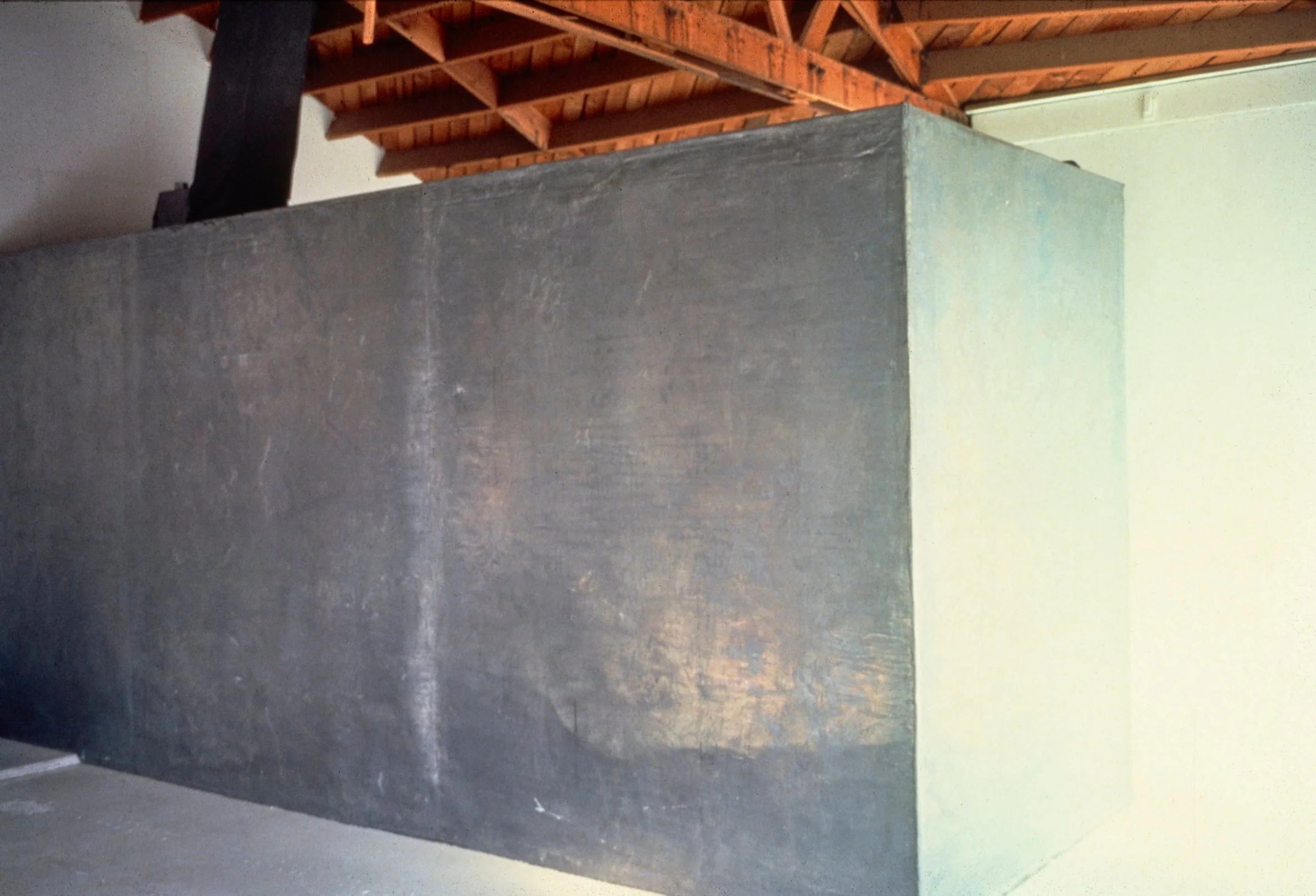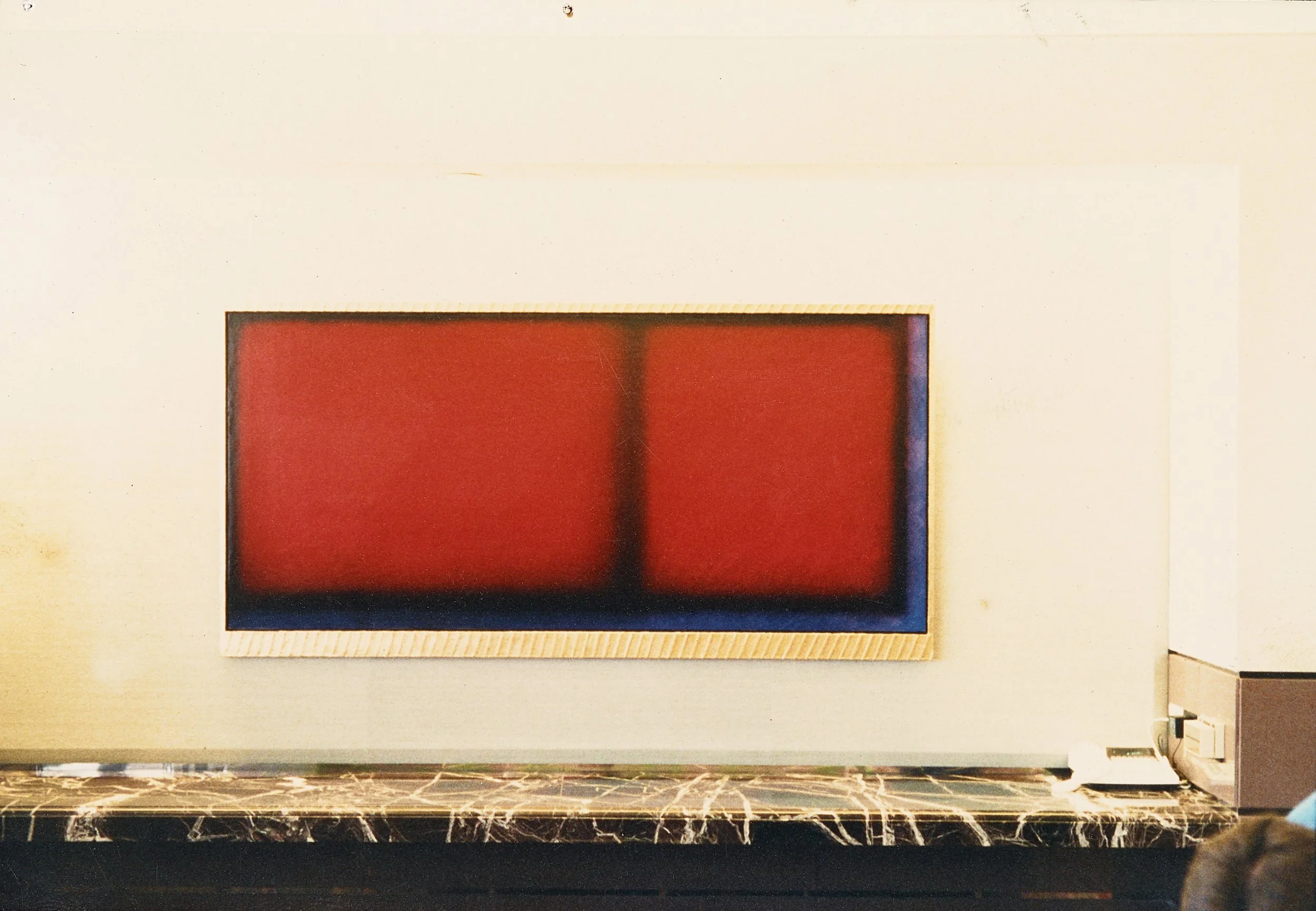Sunrise
SUNRISE (1976)
—
lead room with heliostat mounted on roof of gallery space
Exhibitions
Cirrus Gallery, 1976
Description
In 1976 Sunrise introduced silence, alongside space and light, as a third primary material in Orr’s work. A room 9 by 9 by 18 feet in exterior dimensions was built indoors, its outer surfaces sheathed with sheets of lead which by screening out most radiation created, inside, a partial cosmic-ray void. The dimensions of the interior space were arithmetically related to those of the King’s Chamber of the Great Pyramid.
A ceiling channel at one end of the interior of the room extended through the rooftop of the outer building; on the roof a tracking device (heliostat) followed the sun from dawn to dusk and reflected it, through the channel, onto the back interior wall of the lead-sheathed room. Each sunrise, an upright silvery panel set into the rear wall of the black, light-tight inner space would catch a thin strip of light at its bottom edge. This swath of light would grow through the day, holding tightly to the edges of the silvery ground, until sunset, when it would fade quickly.
In late afternoon the bar of light palpably throbbed in the darkness, like a solid gleaming substance floating several inches in front of the wall. Heavy insulation of the interior walls created an acoustically dead zone: in the unrelenting silence one’s interior body sounds, as well as the quiet and fragmentary thoughts which go unnoticed, bubbled to the surface. The sense of one’s own body, in that black silence, became overpoweringly present and absorbing; at the same time the sense of one’s material boundaries receded. Sleep was unusually deep, and dreams seemed strangely distant and bright.
(Excerpted from “Negative Presences in Secret Spaces Spaces, by Thomas McEvilley, ARTFORUM, 1982)



















